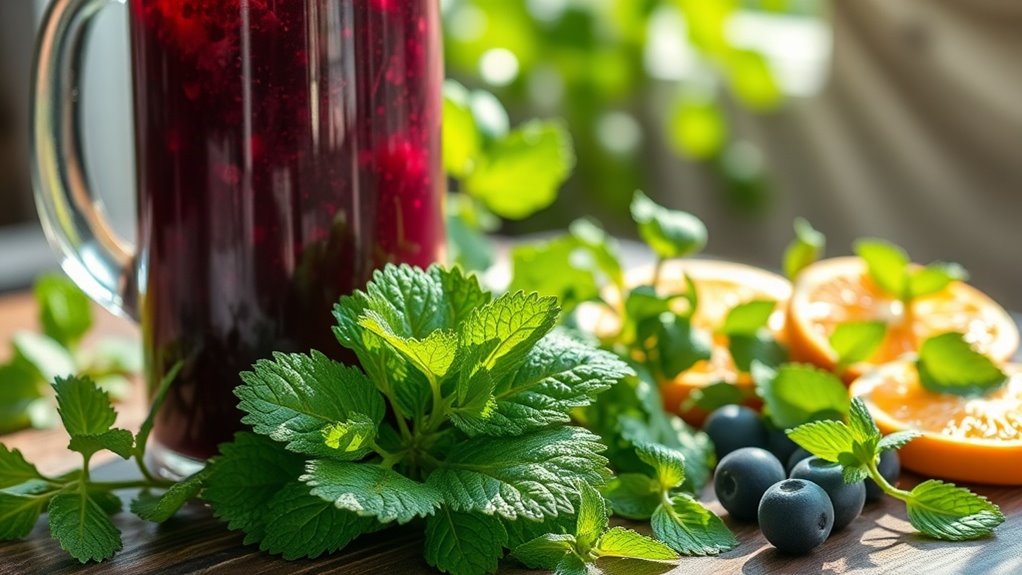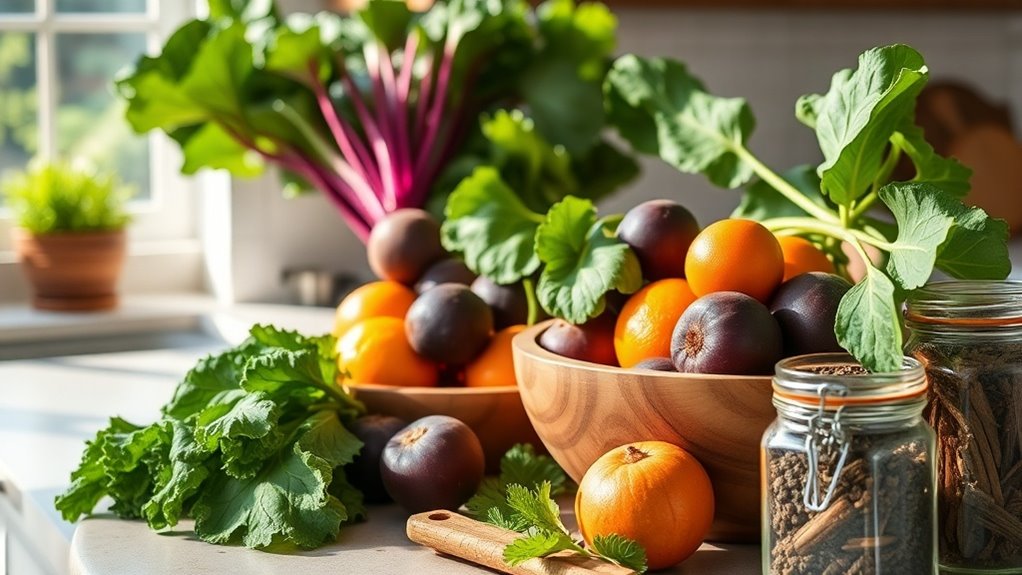Garlic’s Pressure Benefits
Garlic offers proven benefits for stabilizing blood pressure, thanks to its active compound allicin, which studies show can help lower readings in individuals with hypertension.
You can incorporate garlic into your daily routine to potentially reduce systolic and diastolic levels; research from the Journal of Nutrition indicates that 600-1,500 mg of aged garlic extract daily effectively lowers blood pressure in hypertensive patients.
This natural approach enhances nitric oxide production, promoting better blood flow.
Always consult your doctor before starting, as it interacts with some medications, ensuring you use it safely and effectively.
Hawthorn’s Heart Aid
Hawthorn berry serves as a potent natural ally for heart health, particularly in stabilizing blood pressure through its flavonoids and antioxidants that enhance blood flow and reduce vessel resistance.
You can integrate hawthorn supplements into your routine to support cardiovascular function, as research indicates it improves heart muscle contractions and lowers arterial stiffness.
Always consult your healthcare provider before starting, especially if you’re on medications, to avoid interactions.
Evidence from clinical trials shows hawthorn effectively aids mild hypertension, promoting better vessel dilation and overall heart efficiency for you.
Basil’s Blood Balance
Basil stands out as another herb that supports blood pressure stability, thanks to its eugenol compound, which relaxes blood vessels by acting as a natural calcium channel blocker.
You can integrate it into your routine for evidence-based benefits, as studies show it reduces oxidative stress and improves circulation.
Here’s how you might visualize its advantages:
- Imagine harvesting fresh basil leaves, their vibrant green hue signaling nature’s support for your vascular health.
- Picture brewing a steaming cup of basil tea, feeling its warmth ease tension in your arteries.
- Envision chopping basil into your meals, its aromatic oils working subtly to balance your blood flow.
- Visualize rubbing basil extract on your skin, promoting a soothing effect that aids overall pressure control.
Dietary Adjustments to Combat Hypotension
Several simple dietary tweaks can help you manage hypotension more effectively. Focus on boosting sodium and nutrient-rich foods to stabilize blood pressure, as supported by clinical studies. Increase salt moderately, but consult your doctor first. Additionally, snacking on salted nuts can be an easy way to naturally enhance sodium intake for better blood pressure support. Here’s a quick guide:
| Dietary Adjustment | Benefits |
|---|---|
| Increase salt intake | Raises blood volume quickly |
| Add potassium-rich foods | Balances electrolytes for stability |
| Include B12 sources | Enhances red blood cell production |
Hydration Strategies for Reducing Dizziness
Proper hydration stabilizes your blood pressure and reduces dizziness, as research shows that even mild dehydration can lower blood volume and trigger symptoms like lightheadedness.
To achieve this effectively, focus on consistent water intake, which evidence supports as a key factor in blood pressure management.
- Begin your day by drinking a large glass of water, imagining it flowing through your system to immediately boost blood volume and reduce dizziness risk.
- Always carry a reusable water bottle and sip from it every hour, picturing each sip as it helps stabilize your blood pressure throughout the day.
- Include electrolyte-balanced beverages after physical activities, envisioning them restoring your body’s fluids efficiently to prevent dehydration.
- Monitor your urine color; aim for pale yellow, as this indicates proper hydration and helps you avoid symptoms of dizziness.
Additionally, incorporating more salty snacks into your meals can help elevate blood pressure by providing effective sodium intake.
Gentle Exercises to Boost Circulation
Engaging in gentle exercises can enhance circulation, helping to stabilize blood pressure and alleviate dizziness, as studies show that activities like walking or yoga improve blood flow and reduce vascular resistance.
You’ll find that incorporating a daily 20-minute walk boosts your heart’s efficiency, drawing from research in the Journal of Hypertension.
Try yoga poses, such as child’s pose or gentle stretches, to actively promote venous return and lower systolic pressure.
These evidence-based routines, per a Circulation study, minimize risks while you steadily build endurance, ensuring precise, sustainable benefits for overall vascular health.
Additionally, regular exercise can help mitigate stress, a common trigger for conditions like migraines, by promoting relaxation and better overall well-being.





